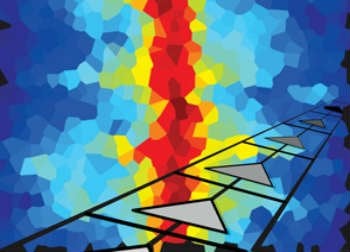Certain symptoms of schizophrenia may arise from uncontrolled activation of neurons that help to build memories during periods of rest.
Sufferers of schizophrenia experience a broad gamut of symptoms, including hallucinations and delusions as well as disorientation and problems with learning and memory. This diversity of neurological deficits has made schizophrenia extremely difficult for scientists to understand, thwarting the development of effective treatments. A research team led by Susumu Tonegawa from the RIKEN–MIT Center for Neural Circuit Genetics has now revealed disruptions in the activity of particular clusters of neurons that might account for certain core symptoms of this disorder.
Tonegawa’s laboratory previously found that mice lacking the protein calcineurin in certain regions of the brain exhibit many behavioral deficits that are characteristic of schizophrenia. In their most recent study, the researchers sought out physiological alterations at the single-cell or circuit level that could connect the absence of the calcineurin protein in the brain with these behavioral impairments.

Their study focused on the hippocampus, a region of the brain associated with memory and spatial learning. Within the hippocampus, specialized ‘place cells’ switch on and off as an animal explores its environment. During subsequent periods of wakeful rest, these place cells continue to fire in patterns that essentially ‘replay’ recent wanderings, allowing the brain to build memories based on these experiences. The researchers used precisely positioned electrodes to measure differences in brain activity in these cells for normal mice and the calcineurin-deficient mouse model of schizophrenia.
Remarkably, essentially identical place-cell activity patterns were observed for both sets of mice during active exploration. Once the animals were at rest, however, the calcineurin-deficient mice displayed a dramatic increase in place-cell activity. In the normal hippocampus, the resting replay process depended on sequential activity from place cells corresponding to specific, real-world spatial coordinates. In contrast, this correlation was all but lost in the calcineurin-deficient mice. Instead, these neurons often seemed to fire indiscriminately, creating high levels of ‘noise’ that overwhelmed actual location information and thwarted memory formation.
“Our study provides the first potential evidence of disorganized thinking processes in a schizophrenia model at the single-cell and circuit level,” says Junghyup Suh, a member of Tonegawa’s research team. These findings fit with an emerging model that suggests that schizophrenic symptoms may arise from excess activation of brain regions within a ‘default mode network’—which includes the hippocampus—during wakeful rest. “Neurobiological approaches that can calm down the default mode network may therefore open up new avenues to alleviating symptoms or curing this mental disorder,” says Suh.
Notes about this neuropsychiatry and memory research
Contact: Susumu Tonegawa – RIKEN
Source: RIKEN press release
Image Source: The image is credited to Susumu Tonegawa, RIKEN–MIT Center for Neural Circuit Genetics and adapted from the press release.
Original Research: Abstract for “Impaired hippocampal ripple-associated replay in a mouse model of schizophrenia” by Suh, J., Foster, D. J., Davoudi, H., Wilson, M. A. and Tonegawa, S. in Neuron. Published online October 16 2013 doi:10.1016/j.neuron.2013.09.014






